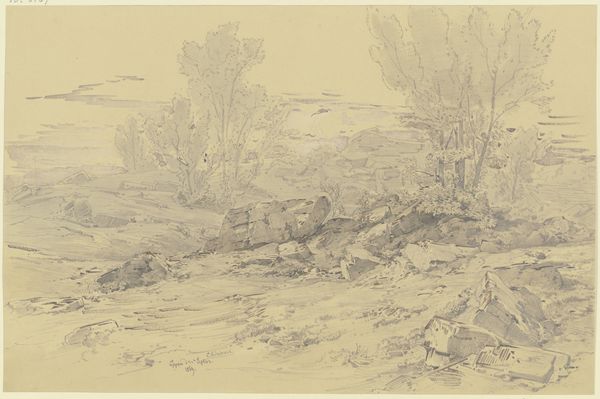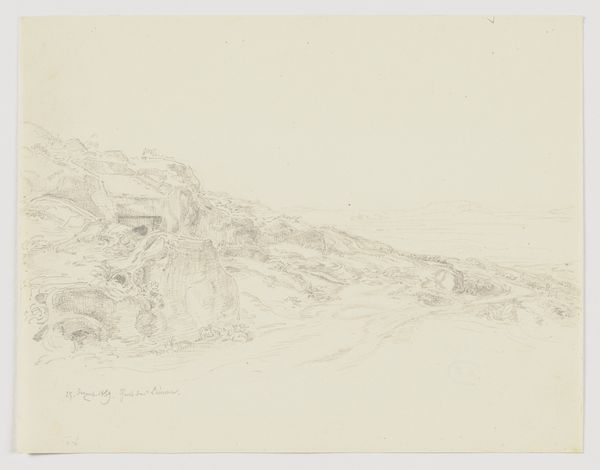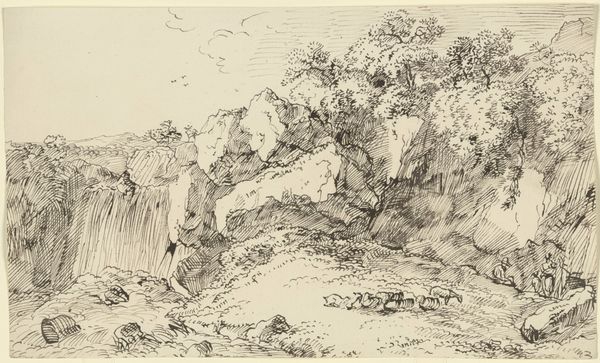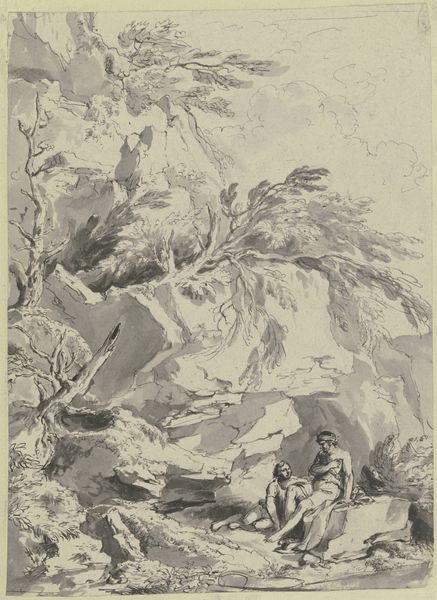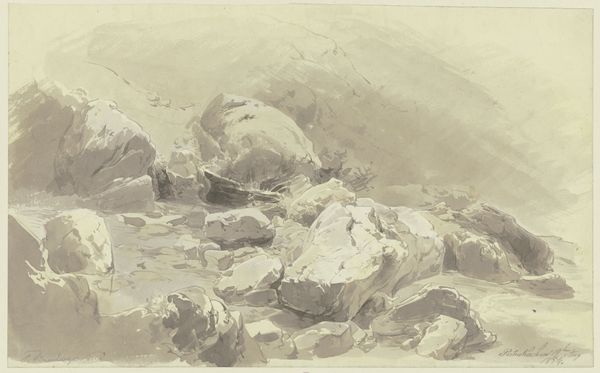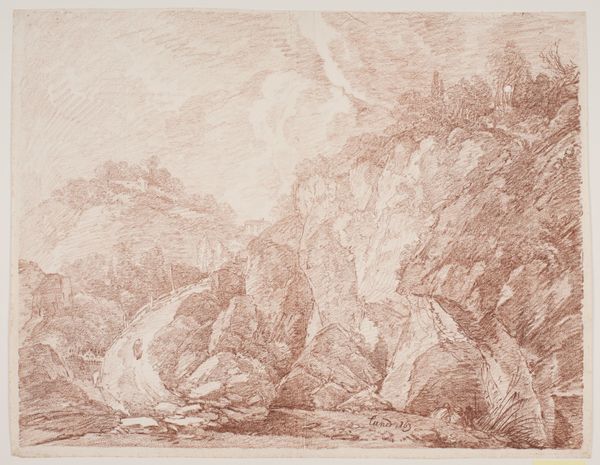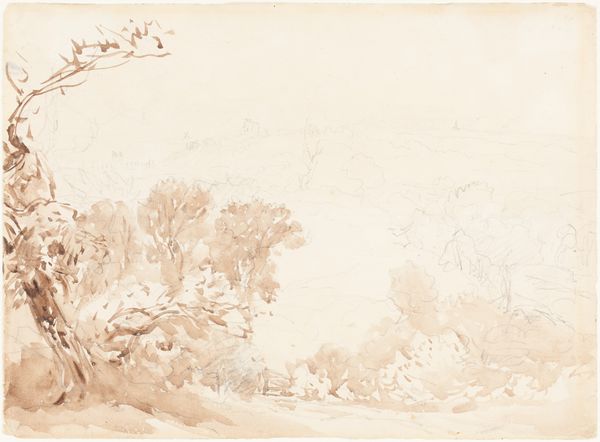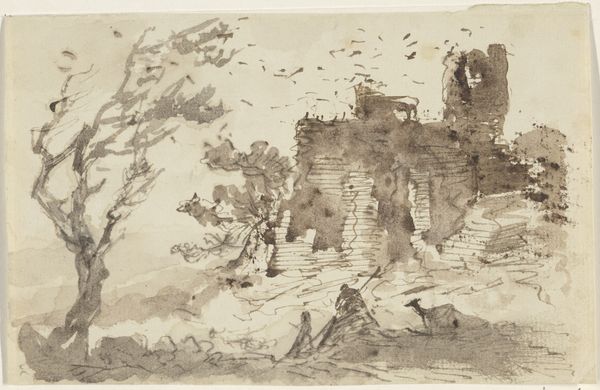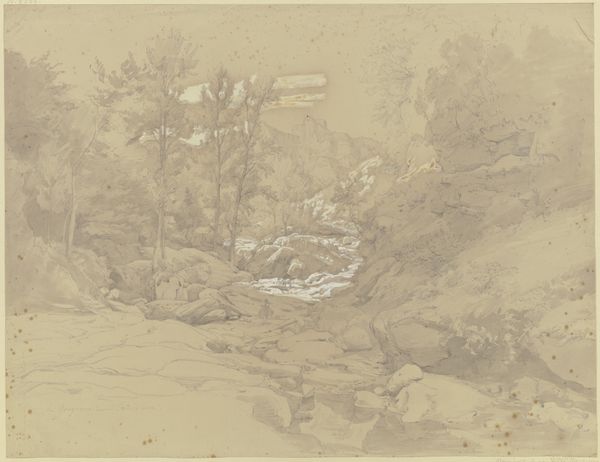
drawing, paper, dry-media, ink, pencil
#
drawing
#
landscape
#
paper
#
dry-media
#
ink
#
pencil
#
realism
Copyright: Public Domain
Curator: It has such a calming, almost ethereal feel. Editor: It's a sketch, but it certainly has a powerful presence. Let me set the scene: This is "Rocky Landscape near Clausen," a drawing created by Albert Emil Kirchner around 1880. The piece uses ink and pencil on paper, showcasing a remarkably detailed, realistic depiction of a natural setting. Curator: That use of light and shadow, especially around the central rock formation – it almost imbues the scene with a spiritual quality. Rocks and water often serve as symbols of constancy and renewal, don't you think? And look how the vegetation clings to the stone – a powerful symbol of resilience. Editor: Well, let's consider the labor involved here. Kirchner, in 1880, took the time to observe, to grind his pigments perhaps, carefully layering pencil and ink. This wasn’t a quick impression; it was a studied engagement with materiality. The detail achieved with such simple tools – pencil and ink on paper – it's all about the deliberate, crafted process. Curator: True, but what does he choose to represent? Not industry, not progress, but raw nature. A wild landscape speaks to the viewer’s inner self. It asks us to contemplate the deeper rhythms of the earth. I think that the towering rocks remind us of humanity's relatively small stature, as well. Editor: But the 'wildness' you mention, is that not also constructed? By carefully rendering nature this way, he’s participating in the 19th-century fascination with the sublime, turning something ordinary like a rocky outcrop into a source of profound artistic meaning. Curator: Possibly, but it offers something enduring, no? Editor: Yes. A careful observation turned into lasting matter. Curator: A portal. Editor: Indeed.
Comments
No comments
Be the first to comment and join the conversation on the ultimate creative platform.
